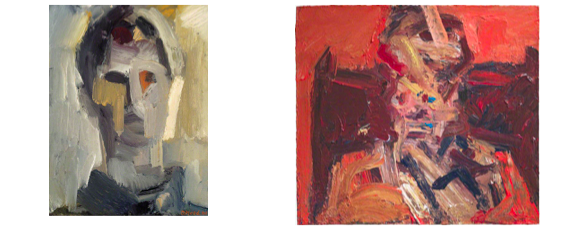The recent death of Frank Auerbach marks the passing of one of the greatest painters of our time, whose commitment to his craft was unmatched. Yet, to fully appreciate Auerbach’s extraordinary achievements, we must turn to his early mentor, David Bomberg. A pioneering modernist, Bomberg not only shaped British art but influenced the course of Auerbach’s career. Their intertwined legacies speak to the transformative power of teaching and the enduring impact of creative mentorship.
David Bomberg: The Radical Innovator
David Bomberg (1890–1957), born into a working-class Polish-Jewish immigrant family in Birmingham, rose to prominence as a revolutionary voice in early 20th-century art. Works like The Mud Bath (1914) and In the Hold (1913–14) showcased his interest in the fragmented forms of Cubism and Futurism. But Bomberg’s artistic vision was never static. His experiences during World War I, where he served as a soldier and later as an official war artist, prompted a dramatic shift toward a more humanistic, emotionally charged approach to painting.
While his contemporaries gained recognition, Bomberg struggled for institutional support. This marginalization led him to focus on teaching, which became a central part of his legacy. Bomberg’s classes at the Borough Polytechnic (now London South Bank University) in the late 1940s and early 1950s became a crucible of creativity, attracting students like Frank Auerbach and Leon Kossoff, who would later define post-war British painting.
The Teacher and the Student
For Auerbach, Bomberg was more than a teacher—he was a philosophical guide who fundamentally altered his approach to painting. Auerbach, a refugee from Nazi Germany, arrived in Bomberg’s class at the Borough Polytechnic in 1947, a young artist grappling with the enormity of his displacement.
Bomberg’s teaching emphasized “the spirit in the mass”—a belief that the painter’s role was not to reproduce appearances but to engage deeply with the subject’s essence. This approach resonated with Auerbach, whose work would come to embody this same intensity. Bomberg urged his students to search relentlessly for truth in their work, to trust their instincts, and to accept failure as a vital part of artistic growth.
Auerbach absorbed Bomberg’s ethos of relentless experimentation, working and reworking his paintings over months—even years—until they captured the essence of his subject. This rigor became the defining hallmark of Auerbach’s career.
Bomberg’s Teaching Legacy
Bomberg’s classes were unconventional, rejecting rigid academic methods. Instead, he fostered an environment of creative exploration. He encouraged students to look beyond surface appearances, to immerse themselves in the emotional and physical reality of their subjects.
Bomberg’s insistence on the relationship between the artist and the material world was revolutionary. He viewed painting as a dialogue between the artist and the subject, one that required complete immersion and honesty. This approach transformed Auerbach’s understanding of painting, laying the foundation for his intense, tactile engagement with the medium.
Auerbach’s thickly layered canvases, capturing the streets of Camden or the faces of friends, embodied and extended some of the principles Bomberg instilled in him. The act of painting, for Auerbach, does engage with Bomberg’s concept of the “spirit in the mass”—a struggle to capture the essence of his subjects through relentless observation and revision.
Auerbach eclipsed Bomberg in public recognition, he never forgot his teacher’s impact. Bomberg’s vision, rooted in the search for truth and the emotional power of form, was a constant presence in Auerbach’s work.
The relationship between David Bomberg and Frank Auerbach exemplifies the profound, lasting impact a teacher can have on an artist’s life. Bomberg’s lessons—about searching, feeling, and daring to fail—shaped Auerbach’s art, while Auerbach’s success brought renewed attention to Bomberg’s work, ensuring his place in the history of British art.
With Auerbach passing, we celebrate not only his remarkable career but also the creative dialogue that began in Bomberg’s classroom. Together, they remind us that the most meaningful art is born not in isolation but through shared ideas and explorations of the medium.


